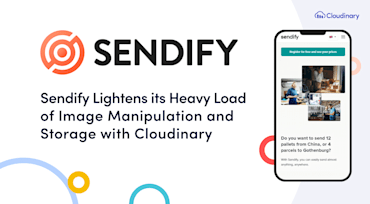Sendify offers an online tool that simplifies logistics, creating a network for shippers and transport companies. Based in Gothenburg, Sweden, Sendify's combination of a freight network and transport management system enables companies to compare price and delivery times between leading carriers, book and track shipments.

Currently, the Android platform boasts the highest demand for mobile solutions, as evidenced by Google’s announcement in 2017 that there were two billion monthly active Android devices, a number that is likely to increase in the years ahead. For app developers like you, now is the right time to build and release solutions for Android. you might have also noticed that a higher percentage of apps being developed nowadays are filled with visual media: images and videos.

Fairfax Media Limited [ASX:FXJ] is one of the largest media companies in Australia and New Zealand that engages audiences and communities via print and digital media. It includes recognizable mastheads including The Australian Financial Review, The Sydney Morning Herald and The Age. Fairfax Media operates numerous news and information websites, as well as tablet and smartphone apps, for online news sites.

The value of categorizing all the images in your library cannot be underestimated. Besides the obvious advantage of making your image library searchable and displaying relevant content to your users based on their interests, you can also learn more about your users according to the content they upload, and find out what people care about and look for. However, when dealing with a large volume of images, manually categorizing the images would take up too much time and resources.

From time immemorial, information and communication has been critical to society. Over time, the means and methods of communicating has evolved considerably, starting with storytelling amongst the early men to print in the 1600s.

When you need to build small custom web components that can be used across all frameworks - Angular, React, Vue vanilla JS and others - Stencil is an ideal tool. Stencil enables you to create platform-independent components that can be exported as a true web component and used anywhere.


Since the Internet boom over a decade ago, the number of new startups established globally has grown consistently. Every year an estimated 1.35 million new tech startups are formed by enthusiastic entrepreneurs, who follow their dreams to build a sustainable and successful business.

In the previous post, we showed how to upload images to a Cloudinary server. In this part, we will play with some of the features we see on the WhatsApp technology. After you or your users have uploaded image assets to Cloudinary, you can deliver them via dynamic URLs. You can include instructions in your dynamic URLs that tell Cloudinary to transform your assets using a set of transformation parameters. All image transformations and image optimizations are performed automatically in the cloud and your transformed assets are automatically optimized before they are routed through a fast CDN to the end user for an optimal user experience. For example, you can resize and crop, add overlays, blur or pixelate faces, apply a variety of special effects and filters, and apply settings to optimize your images and to deliver them responsively.

In this talk, the audience learns everything they will ever need to know about playback controls, offline media, image & video optimization and transformation, pre-loading, deep learning with Images, audio & improving web performance by using the right tools while dealing with media assets in their react apps.
